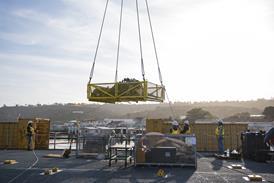David Learmount/KEFLAVIK
Tests using a US Federal Aviation Administration Boeing 727 have proved for the first time that European and US satellite navigation augmentation systems can work together.
The 727 carried out successful Category I precision approaches to Keflavik Airport, Iceland, on 15 October using global positioning system (GPS) satellite navigation signals corrected simultaneously by the US wide area augmentation system (WAAS) and the European Geostationary Navigation Overlay Service (EGNOS).
Participants in the Keflavik trials included the FAA, the European Commission, the UK National Air Traffic Services (NATS) and Defence Evaluation and Research Agency (DERA), and the Icelandic Civil Aviation Administration.
A DERA BAC One-Eleven, using its own equipment but the same augmented GPS signals, later confirmed the FAA's findings.
The FAA 727 mounted two onboard receivers, one receiving WAAS augmentation from the US national satellite testbed (NSTB), and the other simulated EGNOS signals from NATS' northern European satellite test bed (NESTBed) simultaneously. FAA technicians confirm that the signals provided guidance which differed by a maximum of about 5m.
The DERA aircraft has a single receiver and processor which switched between the two augmentation systems. The NATS team says that the only reason it could not receive both augmentation signals simultaneously was "a few bugs in the software which we had not anticipated".
"There are no interoperability issues between NSTB and NESTbed," says NATS deputy engineering manager navigation services Ken Ashton.
The pilots flew all the approaches manually using normal instrument landing system displays slaved to the corrected GPS signals, and both delivered the verdict that there was no difference in flying technique.
Without fail, the aircraft lined up perfectly on the runway extended centreline with correct glideslope as judged by the visual approach slope indicators.
Source: Flight International























